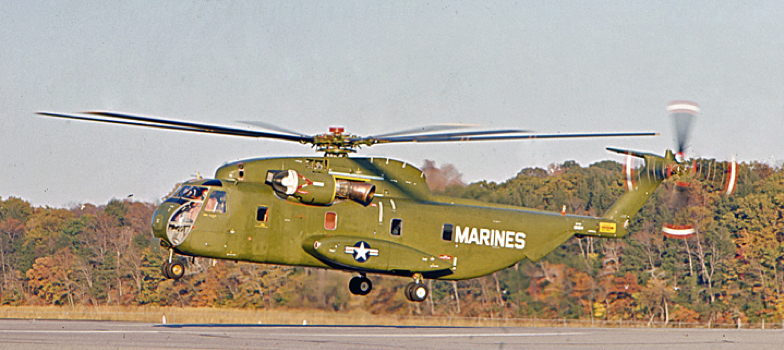
 14 October 1964: The first prototype Sikorsky YCH-53A Sea Stallion, Bu. No. 151613, made its first flight at the Sikorsky plant at Stratford, Connecticut. (Sikorsky Model S-65, serial number 65001.)
14 October 1964: The first prototype Sikorsky YCH-53A Sea Stallion, Bu. No. 151613, made its first flight at the Sikorsky plant at Stratford, Connecticut. (Sikorsky Model S-65, serial number 65001.)
The fuselage of the YCH-53A was similar in configuration to the smaller CH-3C (S-61R). It used the dynamic components from the CH-37 Mojave (S-56) and CH-54A Tarhe (S-64).
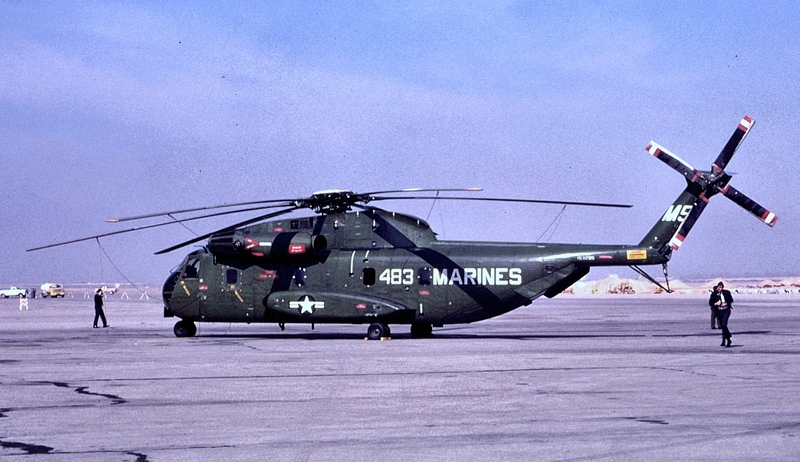
The Sikorsky CH-53A Sea Stallion is a twin-engine heavy-lift transport helicopter operated by two pilots. It is 88 feet, 2.4 inches (26.883 meters) with rotors turning. The fuselage is 67 feet, 2.4 inches (20.483 meters) long and 8 feet, 10 inches (2.692 meters) wide. The six-blade fully articulated main rotor is 72 feet, 2.7 inches (22.014 meters) in diameter and turns counterclockwise as seen from above. (The advancing blade is on the helicopter’s right.) Main rotor speed is 185 r.pm. The four-blade semi-articulated tail rotor has a diameter of 16 feet (4.877 meters) and is placed on the left side of the tail rotor pylon in a pusher configuration. It turns clockwise as seen from the helicopters left. (The advancing blade is below the axis of rotation.) Overall height (rotors turning) of the Sea Stallion is 24 feet, 10.8 inches (7.599 meters). The tail rotor speed is 792 r.p.m.
 The CH-53A is powered by two General Electric T64-GE-6 turboshaft engines rated at 2,850 shaft horsepower, each. Performance of the CH-53D (T64-GE-413, 3,925 s.h.p) has a maximum speed (Vne) of 130 knots (241 kilometers per hour) service ceiling of 16,750 feet (5,105 meters) and range with maximum payload of 540 miles (870 kilometers)
The CH-53A is powered by two General Electric T64-GE-6 turboshaft engines rated at 2,850 shaft horsepower, each. Performance of the CH-53D (T64-GE-413, 3,925 s.h.p) has a maximum speed (Vne) of 130 knots (241 kilometers per hour) service ceiling of 16,750 feet (5,105 meters) and range with maximum payload of 540 miles (870 kilometers)
Two YCH-53A prototypes were built, followed by 139 CH-53A Sea Stallion production models.
The CH-53 was developed into the three-engine CH-53E Super Stallion. The current production variant is the CH-53K King Stallion.
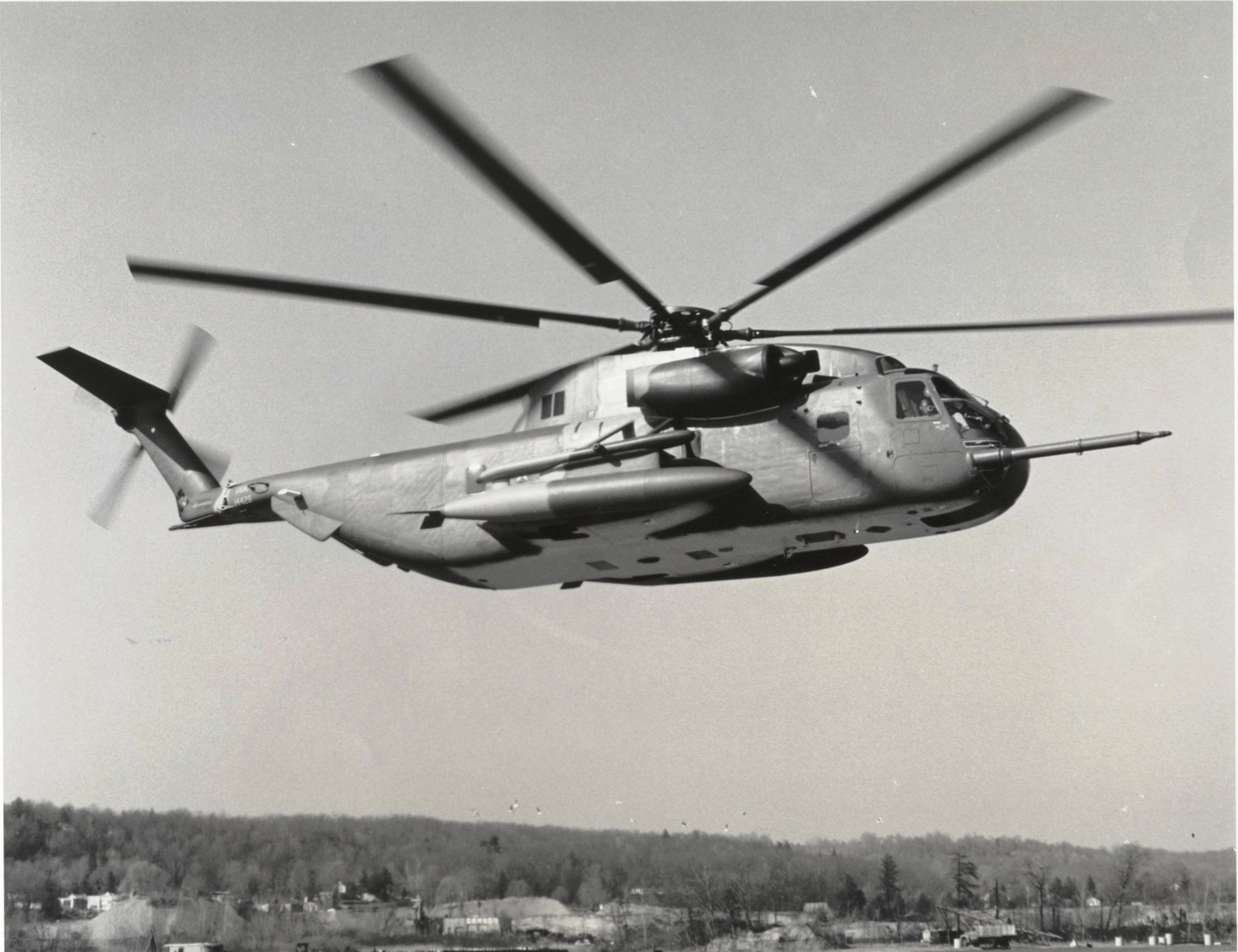
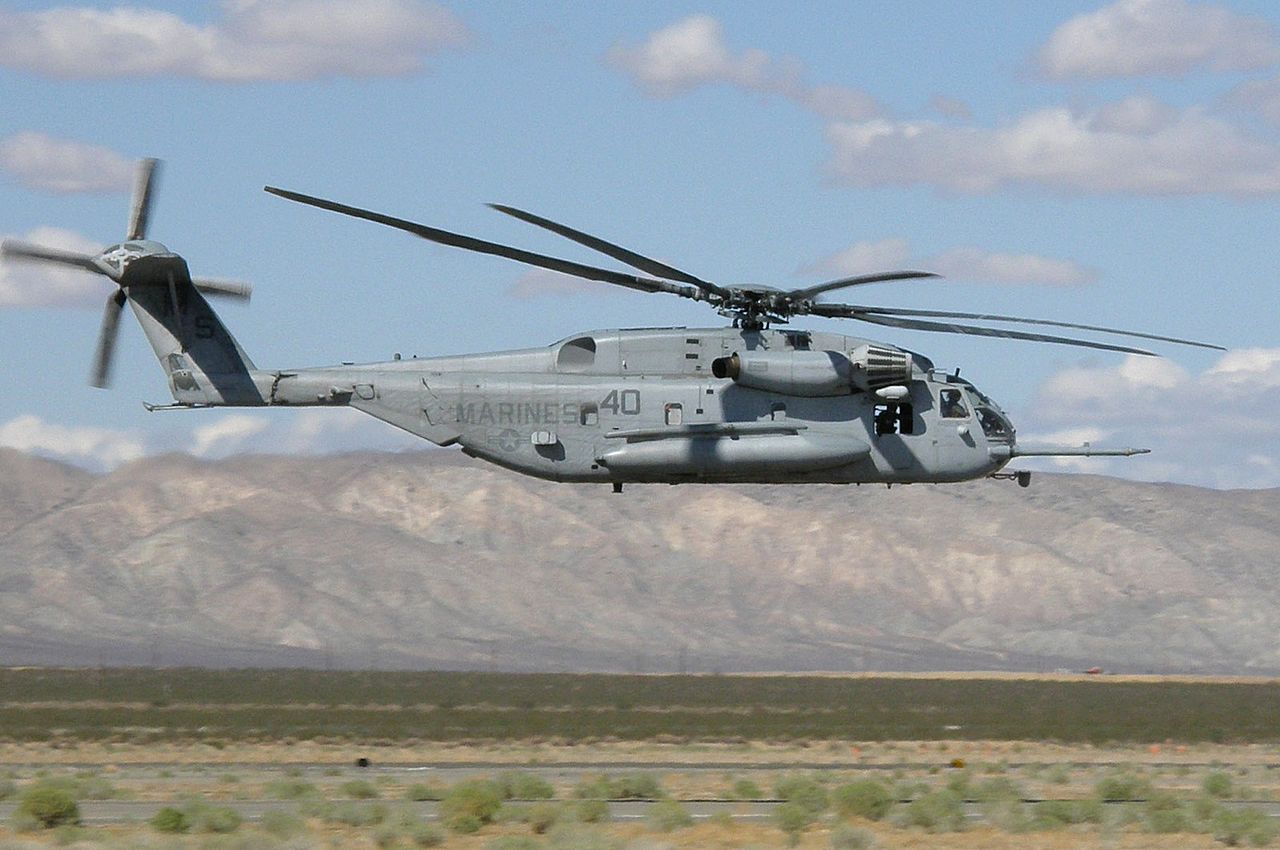
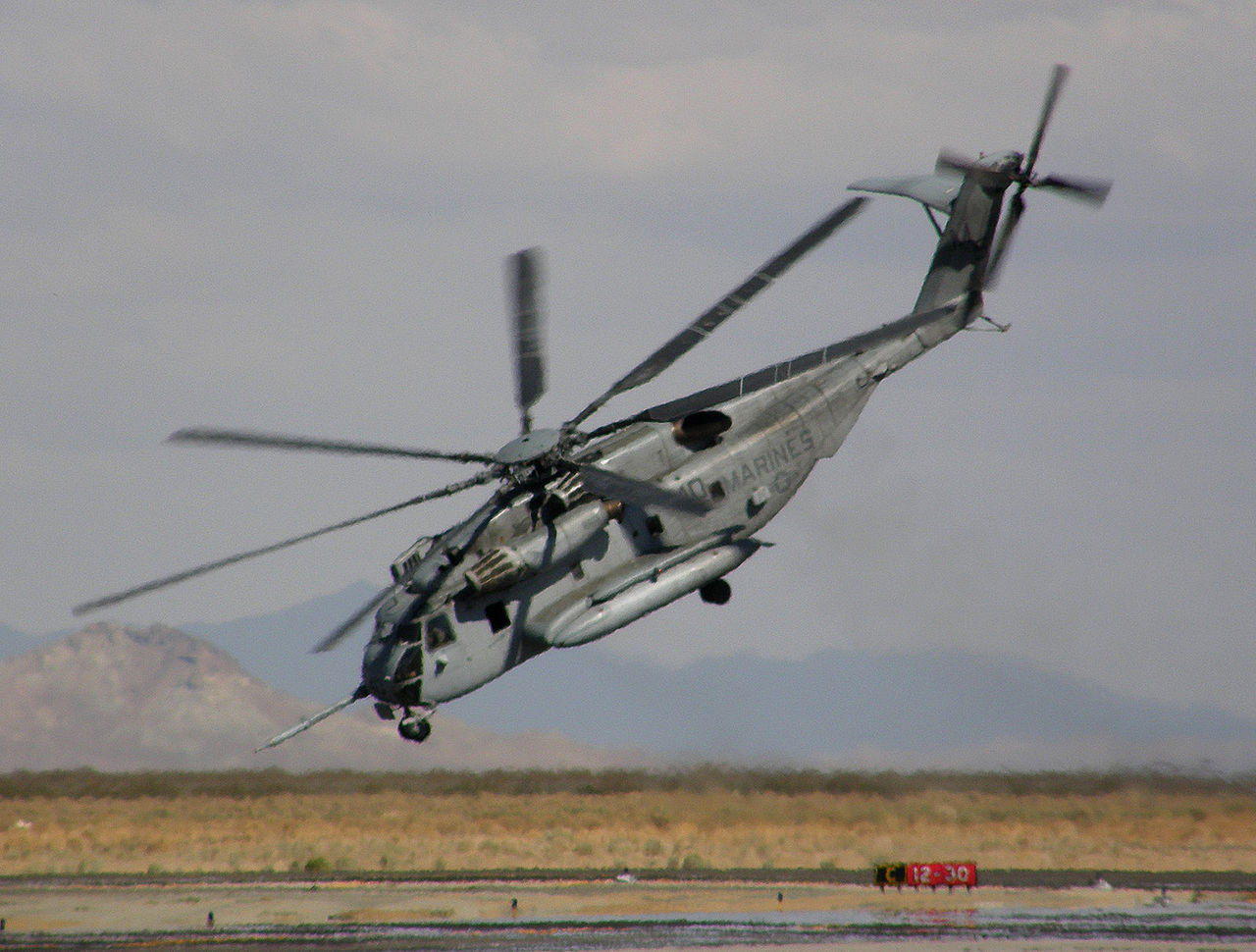

© 2017 Bryan R. Swopes
Looking at the pics, the tail rotor seems to be on the left side of the tailrotor pylon
Thanks for catching my mistake. Fixed it.
The pic loading troops is a CH-53E. CH-53K will not have drop tanks.
You are right! I was curious about the tanks, but went ahead and believed the photo source info. Thanks very much for catching my mistake. I have corrected the article and added a few more photographs. —Bryan
Over across the pond saw the 53 I had just deplaned take a mortar hit on a main rotor blade just at full power lift-off. The imbalance completely destroyed the aircraft down to just stringers and spars remaining. It was horrific. Great bird though.
Tom, what a super giant bird! Wish I could have seen you behind the stick! You rock, my bro’! Semper Fi.
Proud to have provided T64 engineering support to both CH/MH-53 models from 2001-2017.
Greatest job I had was crewing on the 53’s over SOCAL, Hawaii and Somalia. They have the best rumbling-the-earth approach as they fly toward you!
I crewed and worked on all models (CH-53 A/D/E and MH-53E when HMT-302 was the combined USN/USMC RAG) but preferred the Mighty D. Before we separated 302’s assets due to the impending BRAC, we flew all 27 with some dropping out of or into the massive fly over of Tustin and El Toro.